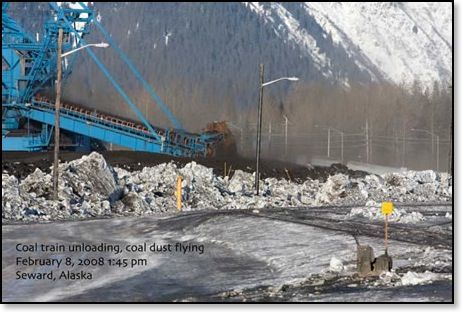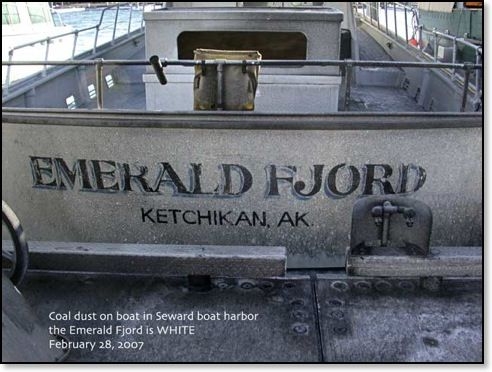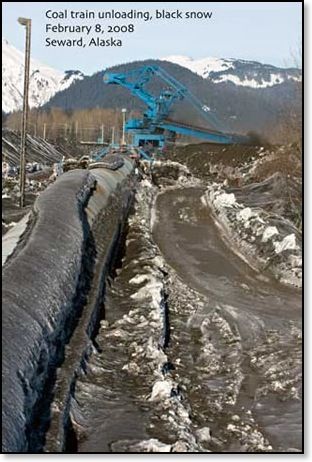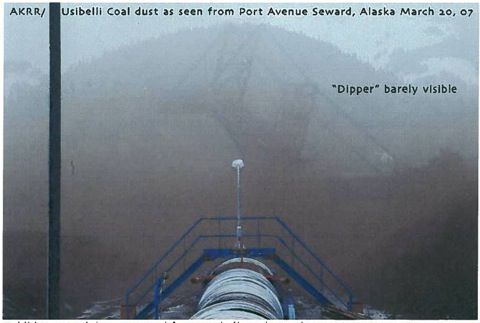We’ve already seen how coal dust looks near export terminals at Point Roberts and Prince Rupert, British Columbia. Now let’s take a gander at the export facility at Seward, Alaska.
As a 2010 article in the Anchorage Daily News calls it:
When the north wind blows in Seward, dust flies off a large pile of coal and covers the town’s scenic boat harbor in black grit.
Photos make the problem clear. Courtesy of the good folks at Resurrection Bay Conservation Alliance, here are four photos of coal dust in and around the Seward Harbor.
Spurred in part by a citizen’s lawsuit, the coal operator has been making costly upgrades since around 2003. According to the ADN:
More than $1 million has been spent on safety, operation and environmental improvements since the railroad took over six years ago, she said.
Among them: seals on openings to control dust, dust-control bars along the conveyor belts and stacker reclaimer, a new transfer chute on the ship loader to minimize incidental spillage, skirting along the ship loader belt and ensuring the dust-control system works in freezing weather.
Yet according to many citizens, coal dust continues to plague Seward. Here’s ADN again:
Litmans, the Trustees for Alaska attorney, said when the wind blows from the north, plumes of coal dust rise off the pile and settle on the water. When the coal is scooped up off the pile and loaded onto the conveyor belt, more dust is put into the air. Even more dust is generated when the coal is loaded onto ships.
Besides the dust, coal chunks fall off the conveyor belt and into the bay, he said.
On some level the problem is actually a fairly basic one: containing coal dust is hard. There is a good reason why coal dust complaints are commonplace in communities near coal stockpiles. (See, just for a few quick examples in the US, Floyd County, Kentucky; Roda, Virginia; Madison, Wisconsin; Mobile, Alabama; Newport News, Virginia; and Mountaintop, Pennsylvania.)
Many coal operators shirk their responsibility to local communities and avoid doing much to control the spread of dust. Yet dust can be very difficult to capture, particularly in windy conditions. In fact, as one study in Canada aptly put it: “coal terminals by their nature are active sources of fugitive dust.” It’s not exactly a cheery thought, but it appears to be largely true. [Ed. note: this paragraph was edited on 1.27.12]
More photos of coal dust in Seward are available at the Resurrection Bay Conservation Alliance website, as well as at the Coal Diver website. And even more photos of Seward’s coal dust probelm at this Sierra Club webpage and at Ground Truth Trekking.
It ain’t pretty.
Thanks to Kathy Washienko for her invaluable research assistance. All photos in this post are courtesy of Russ Maddox, Resurrection Bay Conservation Alliance, and are used with permission.





Comments are closed.